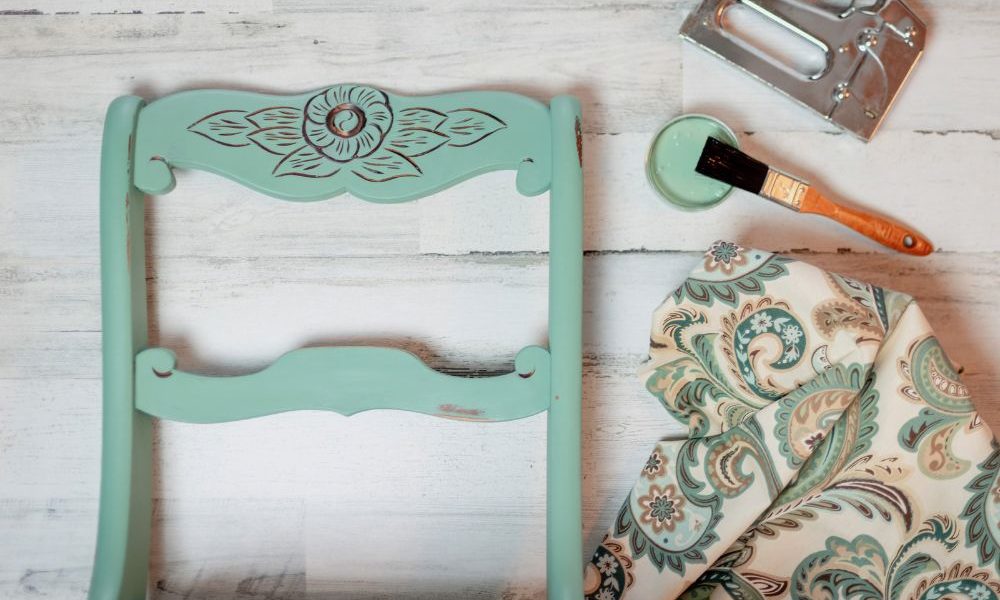Furniture makeovers are a wonderful way to breathe new life into old, tired pieces. Not only can this process rejuvenate your home décor, but it also allows you to express your creativity and reduce waste. As Annie Sloan, creator of Chalk Paint, says, “There’s no need to throw away old furniture when you can give it a new lease of life with a bit of paint and creativity” (Source: Annie Sloan Website). This article will guide you through transforming your old furniture into beautiful treasures.
Why Transform Old Furniture?
Environmental Benefits
Upcycling old furniture helps reduce waste and conserves resources. According to a study by the Environmental Protection Agency (EPA), furniture waste is a significant contributor to landfills. By refurbishing and reusing furniture, we can minimize this waste and its environmental impact (Source: EPA).
Personal Satisfaction
Transforming furniture can also bring personal satisfaction. The process of creating something new from something old can boost your creativity, self-efficacy, and overall happiness. A study published in the Journal of Cleaner Production found that upcycling has positive psychological benefits (Source: ScienceDirect).
Economic Value
Upcycling can be a cost-effective way to furnish your home. Instead of spending money on new furniture, you can update existing pieces for a fraction of the cost. Additionally, the Ellen MacArthur Foundation reports that upcycling can create jobs and generate economic value (Source: Ellen MacArthur Foundation).
Getting Started with Furniture Makeovers
Choosing the Right Piece
Start by selecting a piece of furniture that you want to transform. Look for items that have good bones but might be outdated or worn. Solid wood furniture is a great choice because it is durable and can withstand sanding and painting.
I once found an old wooden dresser at a thrift store. It was scratched and missing a few knobs, but I saw potential in its sturdy frame and intricate carvings. With a little effort, I knew it could become a centerpiece in my bedroom.
Cleaning and Preparation
Before you begin any makeover, thoroughly clean the piece. Remove any dust, dirt, or grease that could interfere with paint or stain adherence. Use a mild soap and water solution, and let the furniture dry completely.
Marian Parsons, known as Miss Mustard Seed, advises, “Furniture makeovers are a great way to add personality and charm to your home. Don’t be afraid to experiment and try new things” (Source: Miss Mustard Seed Blog).
Techniques for Transforming Furniture
Painting
One of the most popular ways to update furniture is by painting it. Chalk paint, milk paint, and latex paint are all great options depending on the look you want to achieve.
Steps for Painting
- Sand the Surface: Lightly sand the furniture to remove any old finish and create a surface that the paint can adhere to.
- Prime (if necessary): If the furniture has a dark finish or if you’re using a light paint color, consider applying a primer.
- Paint: Apply the paint in thin, even coats. Multiple coats may be necessary for full coverage.
- Seal: Once the paint is dry, seal the piece with a clear wax or polyurethane to protect the finish.
I used chalk paint to transform the old dresser I found. The paint went on smoothly, and I loved the matte finish it provided. After sealing it with wax, the dresser looked brand new and added a charming touch to my room.
Staining
Staining is another option, especially if you want to highlight the natural beauty of the wood. Stains come in various colors and can enhance the grain of the wood.
Steps for Staining
- Sand the Surface: Sand the furniture down to bare wood, starting with coarse-grit sandpaper and finishing with fine-grit sandpaper.
- Clean: Remove any dust with a tack cloth.
- Apply Stain: Apply the stain with a brush or cloth, following the wood grain. Wipe off any excess stain with a clean cloth.
- Seal: Once the stain is dry, apply a clear finish to protect the wood.
Jon Peters, a furniture restoration expert, states, “Restoring old furniture is not just about making it look good. It’s about preserving history and giving new life to pieces that have stories to tell” (Source: The Furniture Joint).
Decoupage
Decoupage involves decorating furniture with paper cutouts. This technique can add a unique and artistic touch to your pieces.
Steps for Decoupage
- Prepare the Surface: Sand and clean the furniture.
- Cut Out Designs: Cut out designs from paper or fabric.
- Apply Adhesive: Use a decoupage medium or glue to adhere the cutouts to the furniture.
- Seal: Apply multiple layers of the decoupage medium over the designs to seal and protect them.
I decoupaged a small side table with vintage floral prints. The process was fun and allowed me to get creative with patterns and designs. The finished table became a conversation piece in my living room.
Upholstery
Reupholstering can transform chairs, benches, and other upholstered furniture. New fabric can completely change the look and feel of a piece.
Steps for Upholstering
- Remove Old Fabric: Carefully remove the existing fabric, being mindful of how it was attached.
- Cut New Fabric: Use the old fabric as a template to cut the new fabric.
- Attach New Fabric: Use a staple gun to attach the new fabric, pulling it tight to avoid wrinkles.
- Finish Edges: Use upholstery tacks or trim to finish the edges.
Cami Monet, a furniture upcycling artist, says, “Upcycling furniture is a sustainable and affordable way to decorate your home. It’s also a lot of fun and a great way to express your creativity” (Source: The House That Lars Built).
Tips for a Successful Makeover
Start Small
If you’re new to furniture makeovers, start with a small project. This will help you build confidence and skills before tackling larger pieces.
Experiment with Techniques
Don’t be afraid to try new techniques and styles. Whether it’s distressing painted furniture for a vintage look or using metallic finishes for a modern touch, experimenting can lead to beautiful results.
Use Quality Materials
Invest in high-quality paint, brushes, and finishes. Good materials can make a significant difference in the final look and durability of your project.
Max McMurdo, an upcycling designer, encourages, “Don’t be afraid to think outside the box when it comes to furniture makeovers. There are endless possibilities for transforming old pieces into something new and exciting” (Source: Max McMurdo Website).
When I first started upcycling, I worked on a small wooden stool. Experimenting with different paint techniques helped me find my style and gain the confidence to move on to larger projects.
The Impact of Furniture Makeovers
Environmental Benefits
By upcycling and refurbishing old furniture, you help reduce waste and conserve resources. This sustainable approach is better for the environment compared to buying new furniture.
The EPA study highlights that furniture waste is a significant contributor to landfills, and upcycling can help reduce this waste (Source: EPA).
Psychological Benefits
Engaging in furniture makeovers can boost your mood, reduce stress, and increase self-esteem. The Journal of Positive Psychology found that DIY activities like furniture makeovers can improve well-being (Source: Taylor & Francis Online).
Economic Benefits
Upcycling furniture can be more cost-effective than buying new pieces. It also adds unique character to your home that store-bought furniture might lack.
The Ellen MacArthur Foundation report shows that upcycling can create economic value by generating jobs and promoting sustainable practices (Source: Ellen MacArthur Foundation).
Consumer Attitudes
Consumers are increasingly interested in upcycled furniture for its unique character, affordability, and sustainability. A study by the University of Gothenburg found that these factors are driving consumer interest (Source: University of Gothenburg).
Conclusion
Furniture makeovers are a fantastic way to transform old pieces into treasures, adding personality and charm to your home. By considering environmental, psychological, and economic benefits, you can see why upcycling is a valuable practice. As Annie Sloan beautifully puts it, “There’s no need to throw away old furniture when you can give it a new lease of life with a bit of paint and creativity” (Source: Annie Sloan Website).
For more insights and tips, check out the following studies and articles:
- The Environmental Impact of Furniture (EPA)
- The Psychology of Upcycling (ScienceDirect)
- The Economic Benefits of Upcycling (Ellen MacArthur Foundation)
- Consumer Attitudes Towards Upcycled Furniture (University of Gothenburg)
- The Impact of DIY on Well-being (Taylor & Francis Online)
By following these guidelines and incorporating your unique style, you can create beautiful, functional pieces that tell a story and make your home truly special.



